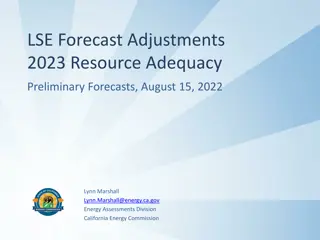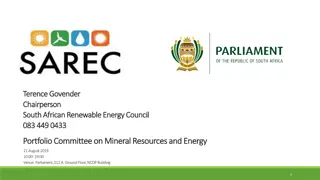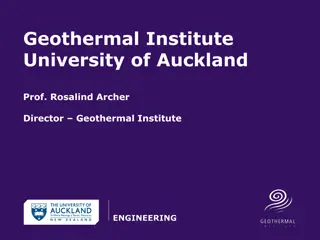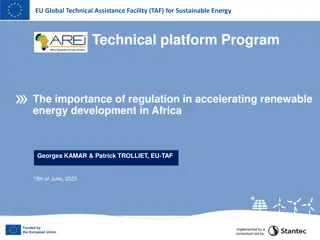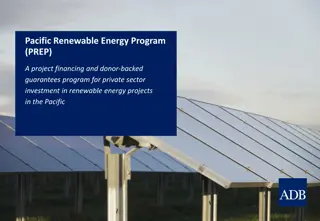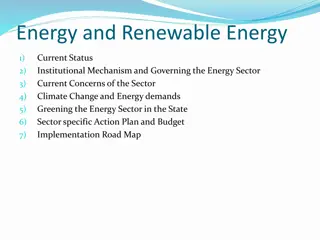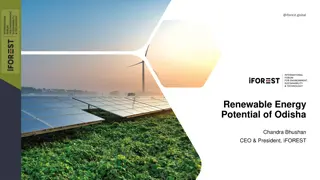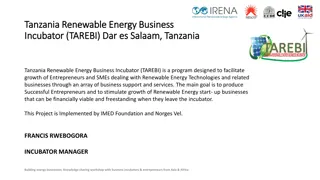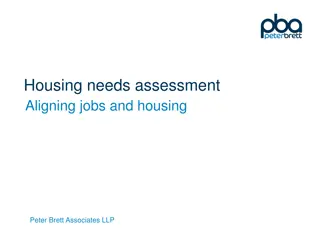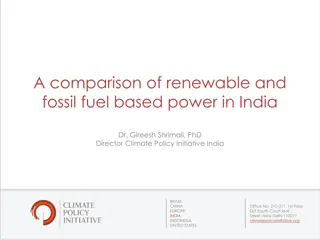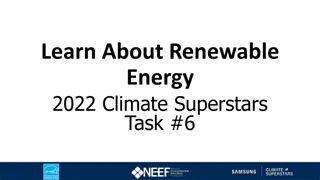Evaluation of S2S Forecasts for Renewable Energy in India
Assessing the forecast quality of meteorological variables crucial for the renewable energy sector in India using seasonal forecast models with lead times ranging from 1 to 5 months. Evaluation based on deterministic and probabilistic metrics over seven climate regions, aiming to identify major patterns and forecast model performance. Data from ERA5 reanalyses from 1994 to 2016 for variables like temperature, wind speed, relative humidity, and solar radiation, essential for power demand and generation estimation.
Download Presentation

Please find below an Image/Link to download the presentation.
The content on the website is provided AS IS for your information and personal use only. It may not be sold, licensed, or shared on other websites without obtaining consent from the author.If you encounter any issues during the download, it is possible that the publisher has removed the file from their server.
You are allowed to download the files provided on this website for personal or commercial use, subject to the condition that they are used lawfully. All files are the property of their respective owners.
The content on the website is provided AS IS for your information and personal use only. It may not be sold, licensed, or shared on other websites without obtaining consent from the author.
E N D
Presentation Transcript
Evaluation of S2S forecasts over India for renewable energy applications Aheli Das and Somnath Baidya Roy Centre for Atmospheric Sciences Indian Institute of Technology Delhi EGU21-2228
Introduction S2S or the sub-seasonal to seasonal scale refers to forecasts with a lead-time range of 15 days to a season. This time-period is a predictabilitydesert (Vitart et al., 2014) with very low forecast skill. However, long-term predictability in this scale is possible due to slowly varying components of the earth system. S2S forecasts can be very valuable for the renewable energy industry for resource allocation and financial planning Image adapted from Next Generation Earth System Prediction: Strategies for Subseasonal to Seasonal Forecasts (2016) by The National Academies of Sciences, Engineering, and Medicine
Objectives The broad goal of the study is to assess the forecast quality of meteorological variables important for the renewable energy sector from 6 seasonal forecast models. The specific objectives of this study are to: Evaluate the forecasts at 1-5 months lead- time from each model by using a set of deterministic and probabilistic metrics over the 7 homogenous climate regions of India. Identify the major patterns displayed by the forecast models and explain the causes. Map of the seven homogenous climate regions of India (Dash and Mamgain, 2011).
Data: Observations Forecast performance is evaluated by comparing against observations from the ERA5 reanalyses (Hersbach et al., 2020). ERA5 is produced using 4D-Var data assimilation in IFS Cycle41r2 with a 31 km horizontal resolution and 137 vertical levels up to 0.01 mb. Variables considered: Monthly mean 2 m temperature & relative humidity (RH) that are required to estimate power demand. RH is estimated from 2 m temperature and dew point using the improved Magnus formula (Alduchov and Ecksridge, 1996) Monthly mean 10 m wind speed & incoming solar radiation that are required to estimate renewable power generation Study period: 1994-2016 (23 years) Target months: April and May when the power demand is the highest
Data: Forecast models Forecast model initialization dates for the 5 lead-times Lead time (mon) Forecast initialized on Forecast initialized on Target month Target month 1 Mar 1 Apr 1 2 Feb 1 Mar 1 3 Jan 1 April Feb 1 May 4 Dec 1 Jan 1 5 Nov 1 Dec 1
Methods VERIFICATION METRICS DETERMINISTIC Bias Correlation Fair Ranked Probability Skill Score(FRPSS) Fair Continuous Ranked Probability Skill Score (FCRPSS) PROBABILISTIC Tercile limits are determined separately for each region from the ERA5 reanalysis using leave-one- out cross-validation. Ensemble-size adjusted fair scores for the probabilistic metrics is computed according to Ferro (2013).
Results: FCRPSS Each model generates 70 forecasts with 5 lead times for 2 months and 7 regions. The following table shows the number of skilful forecasts (FCRPSS>0) for each model. SEAS5 GCFS 2.0 MF-6 CFSv2 GloSea5 -GC2_LI SPS3 < 10 10 20 Temperature Wind speed 21 30 Radiation 31 40 RH > 40 SEAS5 model demonstrates the best forecast skill, GCFS2.0 is the least skilful. Temperature is skilfully predicted more than 40 times by 3 models. RH forecast skill is very low.
Results: FCRPSS The following table shows the number of models with skilful forecasts (FCRPSS>0) for each variable, target month and lead time. Temperature is skilfully predicted across many regions, lead times and models Forecast skill is better in April than May RH forecast skill is very low WH Western Himalayas NW North west NC North Central NE North east IP Interior Peninsula WC West coast EC East coast L1: LEAD 1 L2: LEAD 2 L3: LEAD 3 L4: LEAD 4 L5: LEAD 5
Conclusions and Discussions S2S forecast performance over India needs improvement. SEAS5 performs best among all models, with Meteo-France s System-6 and CFSv2 also performing well. On the other hand, GCFS 2.0 is a poor performer. The 2 m temperature forecasts are the most skillful, followed by 10 m wind speed and incoming solar radiation. Relative humidity forecasts demonstrate almost no skill. There are regional differences in forecast skill due to difference in climate patterns. We are in the process of understanding the reasons behind the differences. Differences in 10 m wind speed forecast skill can arise due to differences in roughness length and orographic gravity wave drag parameterizations in the models. Similarly, differences in forecast skill of incoming solar radiation are possible due to interactions between radiation and microphysics schemes, simulation of cloud cover, and radiative forcing factors such as greenhouse gases and aerosols.
References Alduchov, O. A., & Eskridge, R. E. (1996). Improved Magnus Form Approximation of Saturation Vapor Pressure. Journal of Applied Meteorology, 0450(1996)035<0601:IMFAOS>2.0.CO;2 35(4), 601 609, doi: 10.1175/1520- Ferro, C. A. T. (2013). Fair scores for ensemble forecasts. Quarterly Journal of the Royal Meteorological Society, 140: 1917 1923. doi: 10.1002/qj.2270 Dash, S. K., & Mamgain, A. (2011). Changes in the Frequency of Different Categories of Temperature Extremes in India. Journal of Applied Meteorology and Climatology, 50(9), 1842 1858, doi: 10.1175/2011jamc2687.1 Hersbach, H., et al. (2020). The ERA5 global reanalysis. Quarterly Journal of the Royal Meteorological Society, 146(730), 1999 2049, doi: 10.1002/qj.3803 Vitart, F. (2014). Sub-seasonal to seasonal prediction: linking weather and climate. Proceedings of the World Weather Open Science Conference (WWOSC), 16 21 August 2014, Montreal, Canada.






